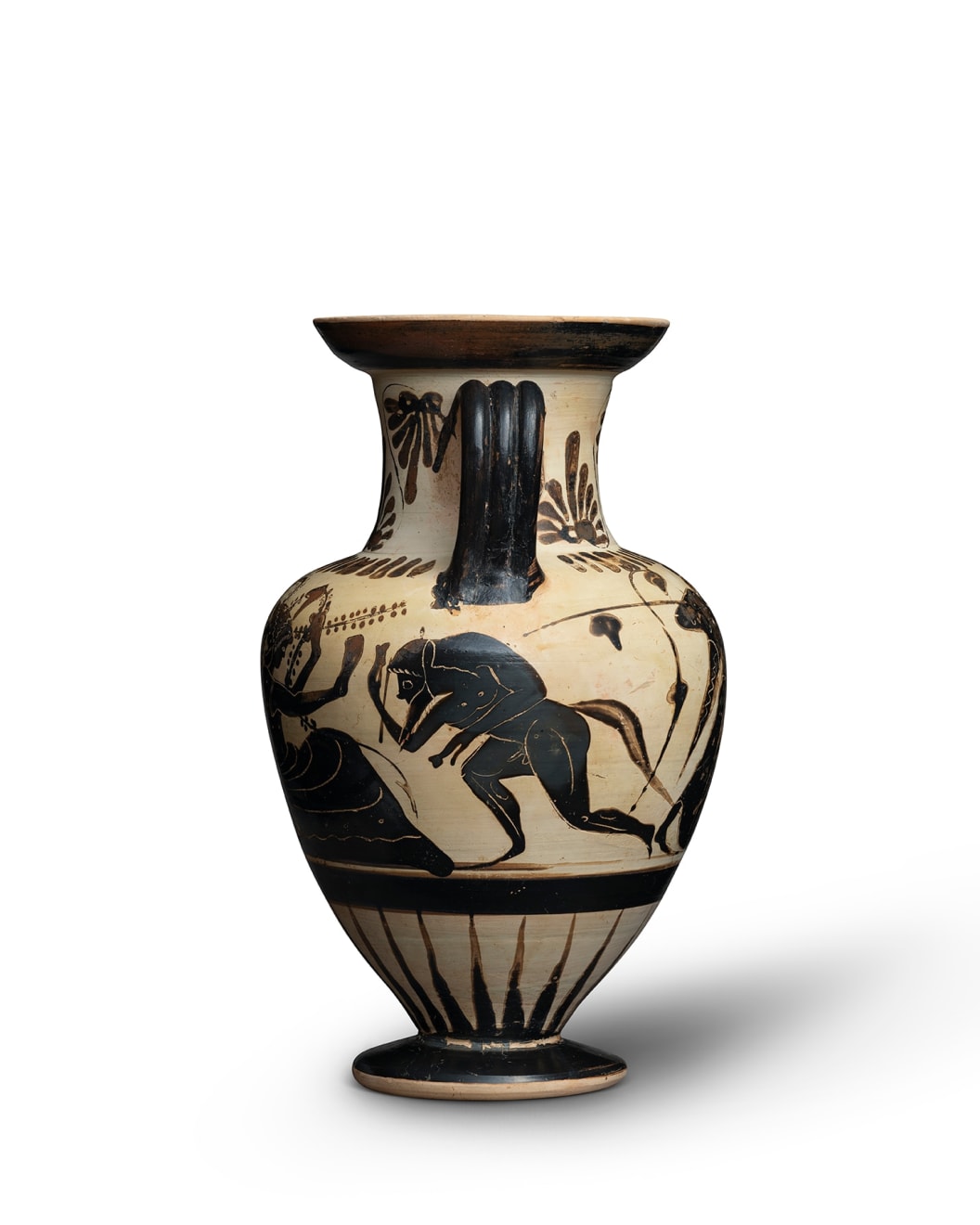Greek
An Attic white-ground amphora of the Light Make Class, attributed to the Pescia Painter, circa 525 - 475 BC
Pottery
Height: 20 cm
Further images
The obverse depicts a symposium scene with Dionysus holding a drinking horn behind Ariadne, both reclining against cushions. Vine tendrils above are shown above them. A satyr faces Ariadne beneath...
The obverse depicts a symposium scene with Dionysus holding a drinking horn behind Ariadne, both reclining against cushions. Vine tendrils above are shown above them. A satyr faces Ariadne beneath one handle, another satyr behind Dionysus beneath the other handle.
The reverse shows a central dancing maenad and satyrs, enlivened with incisions. Palmettes decorate the neck, and rays emanate from the base.
The reverse shows a central dancing maenad and satyrs, enlivened with incisions. Palmettes decorate the neck, and rays emanate from the base.
Provenance
Ars Antiqua, Auktion II, 14 May 1960, pl. 57, no. 145Dr. Hans Stenzl (1880 Munich, Germany - 1980 Riehen, Switzerland), acquired in 1959
Private collection, London, UK, acquired in 1980 from the above
Dr Stenzl was a research chemist at F. Hoffmann-La Roche & Cie. AG and J.R. Geigy AG; he was the inventor of important pain-relieving and anti-rheumatic medications. He formed his collection of antiquities between 1953-1968.
Literature
The Light Make Class is a group of Athenian vases, mostly of small neck amphoras of light make, for which reason Beazley named the group. Their vases were decorated in black-figure and often on white-ground.The Pescia Painter was named by Beazley after two small neck amphoras from Pescia Romana, now in Florence. The painter, part of the Light Class Make group, specialised in decorating small neck amphoras on white-ground. For a similar example see, J.D. Beazley, Attic Black-Figure Vase-Painters, Oxford, 1956, 594.10 (Beazley Archive Pottery Database no. 305900).
Publications
J.D. Beazley, Paralipomena, Oxford, 1971, 298.1bis.Beazley Archive Pottery Database no. 352198.







